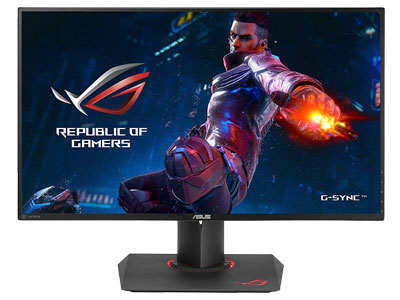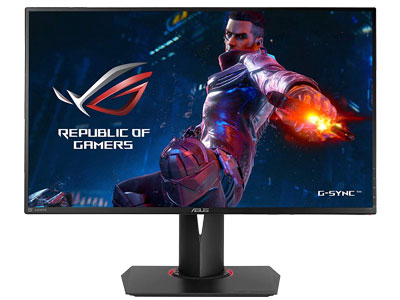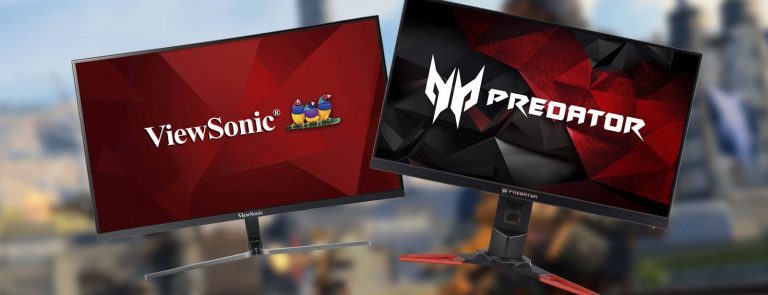What the Difference Between ASUS ROG PG278QR and PG279Q Monitor?
The big difference between the ASUS ROG PG278QR and the ASUS ROG PG279Q monitor is that the PG279Q monitor has an IPS display while the PG279Q has a TN display. TN monitors have poorer viewing angles compared to IPS monitors. Apart from that, both monitors a 165Hz refresh rate, 1440p resolution, and 27-inch display size.
Asus makes some great gaming products and if you are in the market for the best 1440p gaming monitor with a high refresh rate, then you might be interested in the Asus ROG PG278QR or the PG279Q.
On paper, both displays look pretty much the same and look the same aesthetically.
The only difference is in the type of screen that both models have. The PG279Q has a IPS display while the PG278QR features a TN panel. There are pros and cons to both.
In this comparison, we are going to cover the differences between TN and IPS displays and what you should know about it.
vs
Asus ROG PG278QR vs PG279Q Monitor Comparison
The following are some basic specifications of both these displays and what you need to know about them at a glance.
| Monitors | ASUS ROG PG279Q | ASUS ROG PG278QR |
|---|---|---|
| Resolution | 2560×1440 | 2560×1440 |
| Refresh Rate | 165Hz | 165Hz |
| Display Type | IPS | TN |
| Size | 27-inches | 27-inches |
Now that we have gone over the basic specifications of both these screens we can go in-depth and talk about both in detail. The following is what you need to know about the PG278QR and PG279Q.
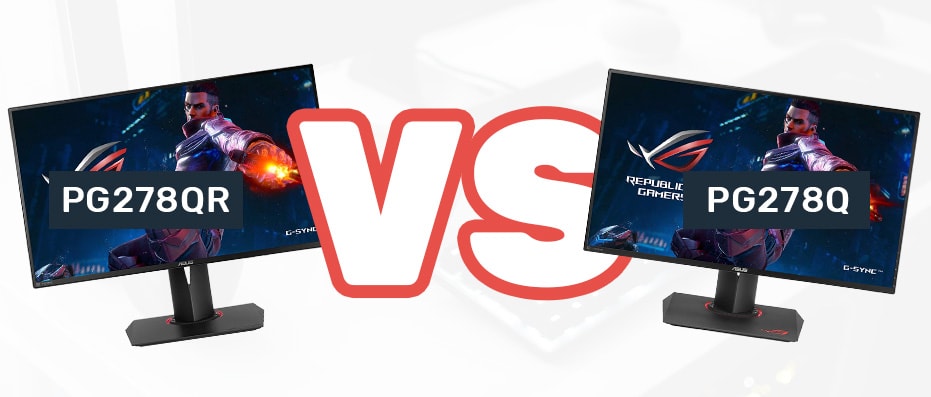
ASUS ROG PG279Q
The ASUS ROG PG279Q is the replacement for the PG278Q and comes with an IPS display which means better viewing angles and color accuracy at the expense of slightly slower response times.
The other specifications are the same. You get the 2560×1440 resolution and 165Hz refresh rate which is considered to be a sweet spot for both gaming and content creation. There are monitors on the market that offer a 240Hz refresh rate but most of them are 1080p displays while this is a 1440p monitor.
If you need the best gaming monitor which offers an impressive blend of high resolution and high refresh rate then this is the option to go for. If that is not enough then let’s go into the details of the display.
The display is beautiful and has slim bezels around the sides. The stand is robust and ergonomic and allows the display to be tilted, pivoted, swiveled and the height is adjustable as well. At the back of the display, you have a single joystick along with some hotkeys for navigation. The menus are easy to navigate and you can change different settings in the menus.
The base of the stand has the LED ring and the Asus ROG logo that lights up. It is a nice touch and looks great without getting too aggressive. The aesthetics are pretty much the same as the older model and that is a good thing in this case.
An interesting feature that this display has to offer is the Nvidia adjustable refresh rate support which allows the display to sync with games that are running between 30-165 Hz. This might not seem like a major feature on paper but once you use it, you will feel the difference. The monitor supports G-Sync, which you can use if you have an Nvidia graphics card. Note that you will need a GTX 960 or better graphics card in order to take advantage of everything that the display has to offer.
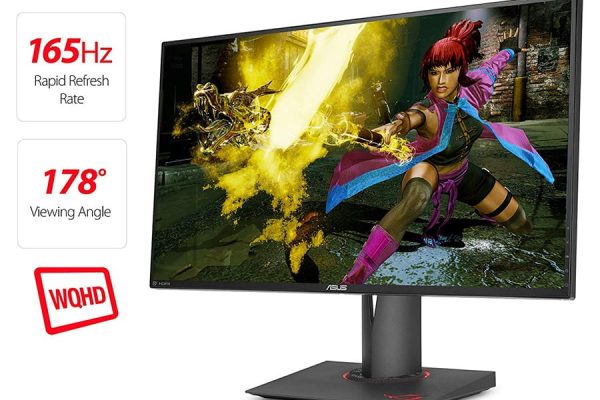
G-Sync does give you a better and smoother gaming experience even if the frame rate dips a little bit but the feature comes with additional costs. A monitor without G-Sync support will cost much lower than this one.
The ASUS ROG PG279Q is a bit expensive when compared to the older model but you do get an IPS panel rather than TN. While the price is a bit high compared to the competition, it does look much better and is a great option for competitive gamers that are not interested in ultrawide monitors.
All things considered, the ASUS ROG PG279Q is one of the best gaming monitors on the market right now. Even though it is a bit expensive, it is highly recommended and very popular. If you are looking for a great gaming experience with all the bells and whistles that you could ask for in a gaming display then this is an option that you should consider.
Pros
- IPS panel
- 1440p 165Hz
- Thin bezels
- Supports G-Sync
Cons
- A bit expensive
- Needs some calibration
ASUS ROG PG278QR
ASUS ROG PG278QR is what some people would call the sweet spot for gaming. It features a resolution of 1440p and the refresh rate is 165Hz which is very impressive indeed. The display offers a pixel density of 109ppi which is great for both gaming and content creation.
I know that there are monitors on the market that offer a 240Hz refresh rate but most of them are 1080p displays while this is a 1440p monitor. As long as you are round 2 feet away from the PG278QR, you will not see individual pixels.
The build quality of the monitor is very impressive indeed but surprisingly it is very light. Usually, when you get a good quality display, it is going to be heavy but that is not the case here. The display comes assembled out of the box. The stand is very ergonomic. You can pivot and swivel the screen and the height is also adjustable.
The stand has a LED halo which is a nice touch but the stand is a bit big which means that you cannot place it as far back on your desk as you might want. You can mount it as well. There is a groove at the back for cable management which is another nice touch by Asus and shows that the display is well thought out.
The display has plenty of ports including DisplayPort 1.2 and HDMI 1.4. You also get a couple of USB ports and a headphone jack as well. There is no DVI port but that would not make any sense anyway.
The display is a TN panel which means that colors are not going to be as accurate or bright as an IPS display but it does mean that you get super-fast 1ms response time. It is safe to say that you are not going to see any kind of ghosting when using this display.
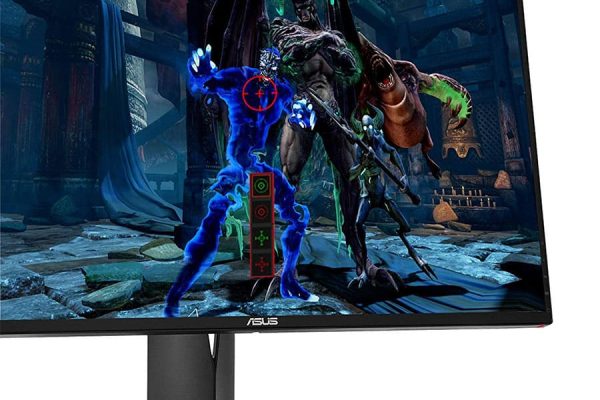
At the back of the display, you have a single joystick along with some hotkeys for navigation. The menus are easy to navigate and you can change different settings in the menus. You will need to adjust some settings in the menu and the contrast and white balance are not right but that is true for pretty much any display that you get in this price bracket. Once you have the settings sorted out, you will be good to go.
The price is a bit high but then again the specs are not that of an entry-level display. It does support G-Sync, which you can use if you have an Nvidia graphics card. You can also get the IPS screen version but that will cost you around $150 more and for some people, it might not be worth the additional money. That is why we can recommend this display.
All things considered, this is a great display for gaming and content creation. It looks good and has all the bells and whistles that you will need for gaming. 1440p 165Hz is a great combination for gaming. Just be sure that you have a powerful graphics card to back all that up. There is no HDMI 2.0 so you will need to use DisplayPort for gaming at 1440p 60 FPS and higher.
Pros
- 1440p 165hz
- Thin bezels
- Supports G-Sync
- 1ms response time
Cons
- No HDMI 2.0
- TN Panel (personal preference)
PG278QR or PG279Q: Which One Should You Pick?
Deciding between the two can be a bit tricky as both models look the same and have pretty much the same specifications. The short answer is that if you want the relatively newer model and the IPS display then you should go with the PG279Q.
On the other hand, if you are more interested in faster response times then you can go with the PG278QR. It comes with a TN panel which means slightly worse image quality but you get 1 ms response times.
TN Vs IPS Displays
TN panels can be engineered to be quicker than IPS displays when it comes to response times so you will notice high-end TN displays marketed for gaming but you should remember that TN panels are worse when it comes to color accuracy and viewing angles. The lowest response time is 1ms and you can usually only get that on a TN panel.
An IPS panel will usually get you down to 4ms but remember that you are getting better visual quality as well. This is a trade-ff that you will have to make if you are interested in getting response times lower than 4ms.
That is why we can only recommend these if you are a competitive gamer that plays intense and fast-paced games like a first-person shooter. If you play non-competitive games that are slower or story-driven then you will hardly feel the difference between 4ms response time and 1ms.
Does Response Times Less Than 5ms Matter?
The debate is pretty much like the difference between 30 FPS and 60 FPS. Some people can hardly tell the difference and are fine gaming at 30 FPS but there are others that need to hit that 60 FPS mark. The same is the case with refresh rates. You will have to check it out on your own to see whether or not getting a higher refresh rate monitor is something that will benefit you.
As is the case with FPS, if you have been playing games at 60 FPS then you will find 30 FPS unplayable. The same is the case with refresh rates. If you have been using a 4ms monitor then you will not have the same experience when playing games using a higher refresh rate screen.
How can you see the difference? Many stores will have different displays on show. You can check out the difference in response time there. If you want to check out the difference in response time at home, then you can do that as well. If you have a TV then you can compare the gaming experience between your monitor and the TV.
TVs usually have much higher response times as compared to gaming monitors. This is not a feature that manufacturers mention but the refresh rate on a TV can be anywhere between 8-14ms if not higher.
Whatever the case is, your TVs response time will be higher than your monitor and that is how you can tell the difference. You can see whether there is a noticeable difference and whether or not you feel it. Then you can decide whether or not you should get a monitor with higher refresh rates.
Conclusion
Both the PG278QR and PG279Q look the same and have similar specifications.
Other than that, both are great gaming displays that look amazing and are functional as well.
GamingFeature invests hundreds of hours of research and testing to help our readers in finding products that fit their specific needs. You support us through our independently chosen links, which earn us a commission. Read more about what we do.
